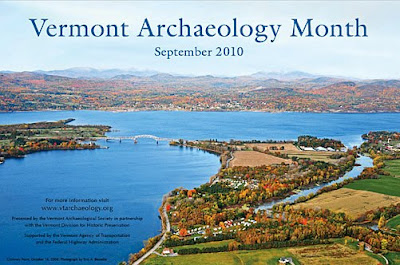 Many people know that Pieter Stuyvesant surrendered the Dutch colony of New Netherland to the English in 1664. Fewer know that the Dutch regained control of their former possessionalmost as easily as it had been lost nine years earlier. “The Colony Strikes Back: the 1673 Recovery of New Netherland” is the theme of the 33rd Annual New Netherland Seminar, Saturday, Sept. 25, presented by the New Netherland Institute (NNI). Registration begins at 8:30 a.m., in the Carole Huxley Theatre at the Cultural Education Center in Albany.
Many people know that Pieter Stuyvesant surrendered the Dutch colony of New Netherland to the English in 1664. Fewer know that the Dutch regained control of their former possessionalmost as easily as it had been lost nine years earlier. “The Colony Strikes Back: the 1673 Recovery of New Netherland” is the theme of the 33rd Annual New Netherland Seminar, Saturday, Sept. 25, presented by the New Netherland Institute (NNI). Registration begins at 8:30 a.m., in the Carole Huxley Theatre at the Cultural Education Center in Albany.
How could the Restoration of government by New Netherland take place against the world power of England? The seminarwill explain such themes as what was happening in the nations of Europe, the daring exploits of the Dutch fleet, the administration of Governor Anthony Colve and then the changes when New Netherland went back to being New York.
Eminent scholars will give presentations throughout the day. They are drawn from the roster of research fellows of the New Netherland Project, which continues under its expanded identity as the New Netherland Research Center to translate original 17th-century Dutch colonial documents.
Joyce Goodfriend, Ph.D., of the University of Denver, will give an overview of theconditions before and after the Restoration.
DennisMaika, Ph.D., will analyze the economic climate. His focus is on Dutch merchants in English New York City. Donald G. Shomette will describe the Dutch naval campaign of the combined fleets of the Zeeland and Amsterdamsquadrons.
David Voorhees, Ph.D., will talk about the Dutch Administration of
Governor Anthony Colve.
Daniel Richter, Ph.D., will draw connections between the Restoration
of New Netherland and the Restoration of the Stuarts in England.
Len Tantillo, history artist, will use his own paintings and drawing to illustrate images of New York 1660-1720. A framed original pencil portrait of Admiral Cornelis Evertsen of the Zeelander Squadron by Tantillo will be sold in a silent auction at the dinner Saturday evening to benefit the New Netherland Institute. In addition, a print of a painting commissioned by Dr.Andrew A. Hendricks will be raffled. The painting, which shows the land owned by Hendricks’ early Dutchancestors, is “The Mesier Mill, Manhattan, c. 1695.” The settlement clustered around a landmark windmill, is on the land now known as Ground Zero in Manhattan.
Following the box lunch, the annual Hendricks Award will be presented to Dirk Mouw for his dissertation “Moederkerk and Vaderland: Religion and Ethnic Identity in the Middle Colonies, 1690-1772.” Dr.Hendricks endows the award of $5,000 for the best book-length manuscript relating to the Dutch colonial experience in North America.
“Re-visiting Wampum, and Other 17th Century Shell Games” will be the topic ofJames Bradley, Ph.D., speaker at the dinner meeting at the University Club. Dr. Bradley is the 2009 winner of the Hendricks Manuscript Award.
The NNI is a membership organization with the responsibility of support for the New Netherland Research Center (NNRC), located in the New York State Library inAlbany. The NNI raises funds and administers grants such as the matching gift of €200,000 presented in Albany in 2009 by Crown Prince Willem Alexander and the Crown Princess Maxima of the Netherlands.
The NNRC is based on the New Netherland Project of translating 17th-century Dutchdocuments as its core, with Charles Th. Gehring, Ph.D. as its director.
Registration for the daylong seminar is $50 or $25 for students with ID. Box lunches may be ordered in advancefor $10. Tickets for the welcome reception and dinner at the University Club are $65.
As an added incentive, participants in the Sept. 25 New Netherland Seminar should know that the Replica Ship Half Moon will be docked in Albany that weekend (at the OGS pumping station at the south end of the Corning Preserve) and will be open for tours from 10 AM to 4 PM on both Saturday and Sunday.
More information is available at the website www.newnetherlandinstitute.org. Questions may be directed to [email protected].
Illustration: Mesier Mill by Len Tantillo. The mill was located at the site of today’s Ground Zero.
The bounty of the harvest will be celebrated at The Farmers’ Museum’s 32nd annual Harvest Festival, taking place Saturday and Sunday, September 18 and 19 from 10:00 a.m. – 5:00 p.m. with live music Saturday evening from 6:00 p.m. – 8:00 p.m. This year, the Museum again welcomes members of the Southern Tier Alpaca Association. Owners and breeders will display their animals and participate in numerous activities throughout the weekend.







